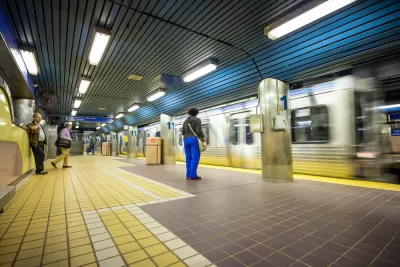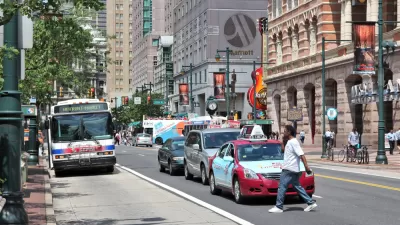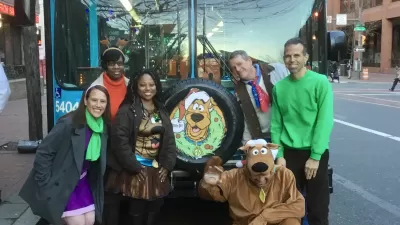Ride hailing apps have changed the way people travel. Though public transit may lose ridership to these services, transit should also learn from technological advancements and use those insights to improve transit service.

"After years of impressive increases, transit ridership tumbled by 6.3 percent last fiscal year on SEPTA and PATCO -- and that was before the Silverliner fiasco on SEPTA’s Regional Rail. Though the evidence is still circumstantial, many believe ride-hailing apps like Uber and Lyft are responsible for spiriting them away," Inga Saffron reports for the Philadelphia Inquirer. This trend is playing out in many cities around the country. Declines in ridership mean less funding for public transit and more traffic for all commuters.
Saffron argues that transit agencies like SEPTA have an opportunity to learn from their competitors by doing things like simplifying payment. SEPTA should also take declining ridership as motivation to improve service through proven best practices (like all-door boarding and removing little-used stops on bus routes) Saffron suggests.
FULL STORY: Ride-hailing apps are killing taxis. Is public transit next?

Planetizen Federal Action Tracker
A weekly monitor of how Trump’s orders and actions are impacting planners and planning in America.

Restaurant Patios Were a Pandemic Win — Why Were They so Hard to Keep?
Social distancing requirements and changes in travel patterns prompted cities to pilot new uses for street and sidewalk space. Then it got complicated.

Map: Where Senate Republicans Want to Sell Your Public Lands
For public land advocates, the Senate Republicans’ proposal to sell millions of acres of public land in the West is “the biggest fight of their careers.”

Maui's Vacation Rental Debate Turns Ugly
Verbal attacks, misinformation campaigns and fistfights plague a high-stakes debate to convert thousands of vacation rentals into long-term housing.

San Francisco Suspends Traffic Calming Amidst Record Deaths
Citing “a challenging fiscal landscape,” the city will cease the program on the heels of 42 traffic deaths, including 24 pedestrians.

California Homeless Arrests, Citations Spike After Ruling
An investigation reveals that anti-homeless actions increased up to 500% after Grants Pass v. Johnson — even in cities claiming no policy change.
Urban Design for Planners 1: Software Tools
This six-course series explores essential urban design concepts using open source software and equips planners with the tools they need to participate fully in the urban design process.
Planning for Universal Design
Learn the tools for implementing Universal Design in planning regulations.
Heyer Gruel & Associates PA
JM Goldson LLC
Custer County Colorado
City of Camden Redevelopment Agency
City of Astoria
Transportation Research & Education Center (TREC) at Portland State University
Camden Redevelopment Agency
City of Claremont
Municipality of Princeton (NJ)





























